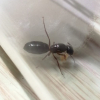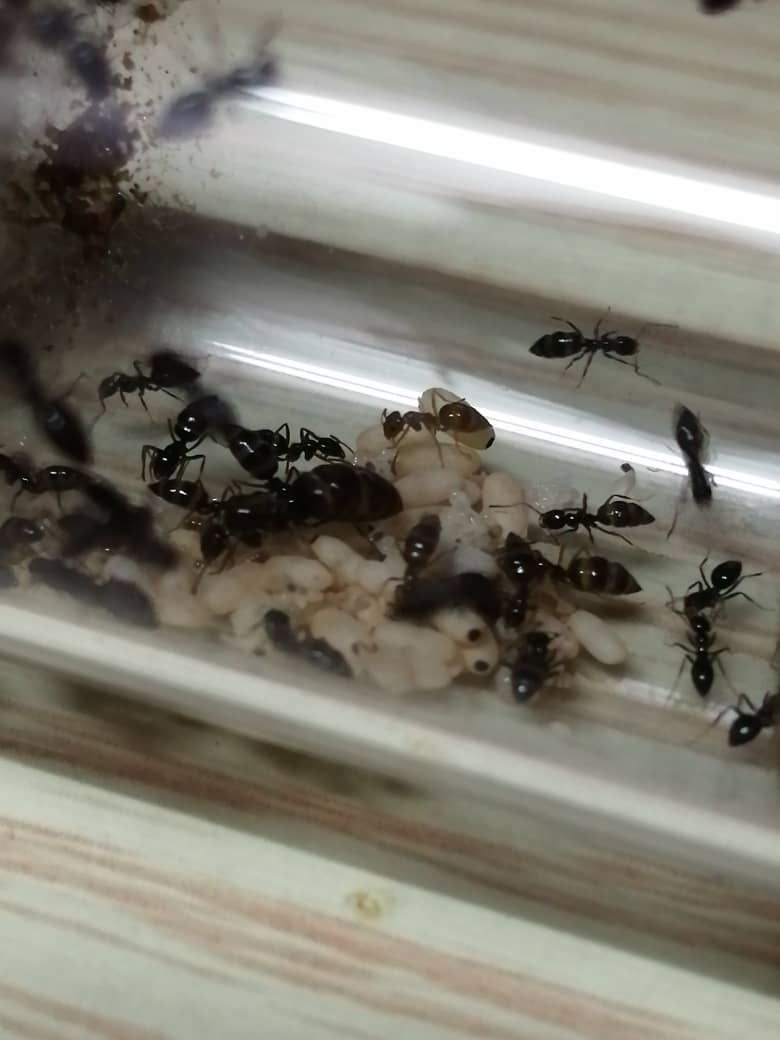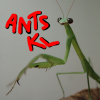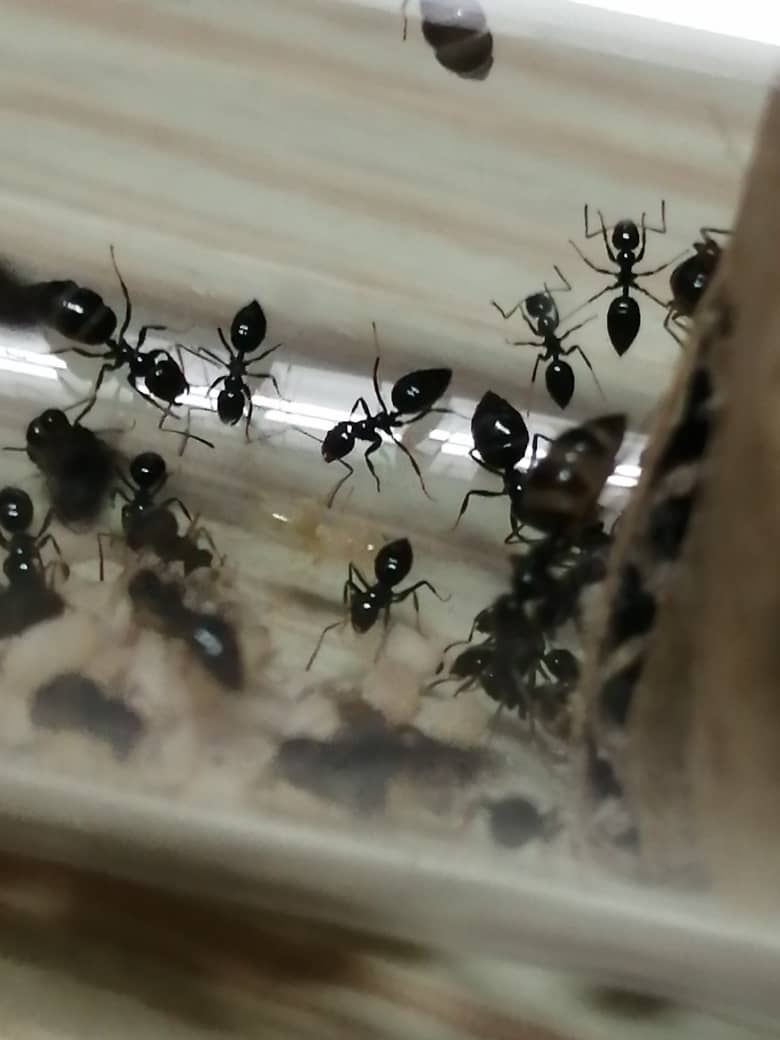1. Location (on a map) of collection: Malaysia
2. Date of collection: sometime in December
3. Habitat of collection: countryside
4. Length (from head to gaster): about 2-3 mm, major is about 4-5 mm, queen is about 6 mm
5. Color, hue, pattern and texture: a shiny black color, the queen is a dark brown color
6. Distinguishing characteristics: cocooned pupae, one tiny petiole node, large repletes, polymorphic
7. Distinguishing behavior: lifts gaster above their head and thorax when threatened, runs very fast (similar to Paratrechina longicornis), sprays formic acid
8. Nest description:
9. Nuptial flight time and date: December-February (possibly also year round)




















